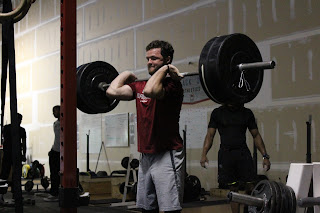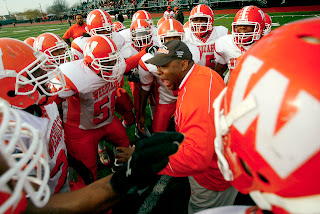What is the Number 1
Reason that athletes do not get any faster?
This is a reoccurring
them with many of the athletes we train. We often ask them what they have been
doing for speed training and the usual reply is gassers or 40 yard sprints.
However, they do not understand why they have not seen their 40 yard time’s decrease.
Coaches we consult with often do not understand why their sled sprints,
multiple sprints, and laps are not translating to faster teams. The biggest
problem is they are not training for speed at all. Speed training must be about
running at your fastest speed, recovering fully, and running again.
Many athletes or coaches usually run their athletes in a state of fatigue for fear that the athletes will just be standing around. Also, they think that is what will make them tough. The problem is they create well-conditioned teams that are not very fast. We ensure that our athletes get the required rest periods in between sprints to ensure every effort is their fastest effort. There are guidelines of how much rest an athlete should get depending on the distance of the sprint. The purpose of the rest period is for the energy reserves to be replenished so the athlete can give their fastest effort on the following sprint.
Many athletes or coaches usually run their athletes in a state of fatigue for fear that the athletes will just be standing around. Also, they think that is what will make them tough. The problem is they create well-conditioned teams that are not very fast. We ensure that our athletes get the required rest periods in between sprints to ensure every effort is their fastest effort. There are guidelines of how much rest an athlete should get depending on the distance of the sprint. The purpose of the rest period is for the energy reserves to be replenished so the athlete can give their fastest effort on the following sprint.
Our program also ensures
that each athlete individualizes their workout within a group setting. We do
this by electronically timing each sprint. This is a great tool to make the
athlete sprint their fastest and be ready to compete. Also, it ensures that our
timing is accurate and efficient. We know these athletes are being timed the
same way every time and there is not as much room for error as with a stop
watch. How many athletes have coaches told that they run 4.4 40 yard dashes
until to run 4.7 at a football camp? Furthermore, when an athlete’s time
decreases passed their 95% threshold we stop them from continuing. This ensures
we are sprinting and not conditioning. Our aim is to run quality efforts by
maximally sprinting every time.
We also emphasize that
the athletes take the time out to stretch muscles that need to be stretched.
Our goal is to individualize the stretching as well as some athletes are more
flexible than others. Also, some are flexible in the wrong areas. Stretching is
as important as any other part of the program and we ask that athletes perform
it daily. The difference you can make in stretching can be significant for many
athletes. For instance, if your muscle has elongated to a point where you can
finish your sprint in 23 steps instead of 25 this can make a difference in your
time. We hope these blogs are helping athletes educate themselves on the
process of developing as an athlete. Also, if you have any topics you would
like to see discussed please suggest them in the comment box.





Comments
Post a Comment